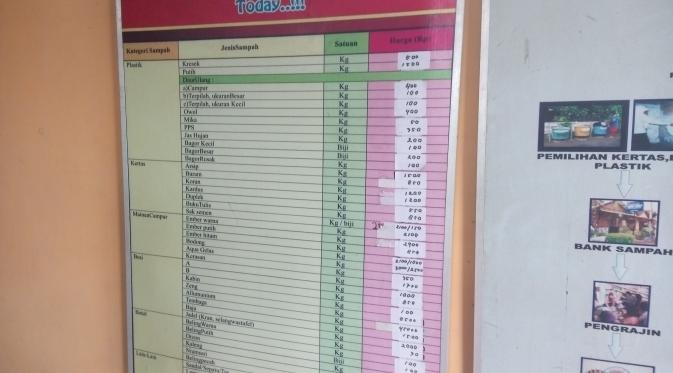

BLOG POST D: Tobacco advertising: lower-class vs upper-class.Post B: Bank Sampah Gemah Ripah “The Prosperous Trash Bank”.Post D: Freedom of Religion in Indonesia.POST B- What does it mean to DrinkWise™?.Post C: Riso Printing, Pseudoscience and Smoking?.Post A: Disguising Promotion as Goodwill.Post C: Interview about Tobacco Usage in Yogyakarta and Indonesian Culture with Adibah.2004, Kamus Lengkap Indonesia-Inggris, Ohio University Press, Ohio, USA. 2009, Banking on the Environment, The Jakarta Post, Bantul Indonesia, viewed 12 April 2015, 2013, Waste Not, Want Not : “Waste Banks” in Indonesia, World Bank Blogs, Indonesia, viewed 12 April 2015, More education and community involvement is needed to be able to assist households with becoming more sustainable in aspects other than just sorting their waste.Īshoka n.d., Bambang Suwerda, United States, viewed 12 April 2015, īank Sampah 2008, Weighing garbage, then recorded on the passbook, Flickr, viewed 13 April 2015, ĭesa Wisata Sidoakur 2009, Kerajinan Dari Sampah Daur Ulang, Indonesia, viewed 13 April 2015, ĭiegenetika 2013, Bank Sampah Gemah Ripah, Bank Sampah Bantul, Bambang Suwerda Indonesia, 12 April 2015, Although this concept has been successful in reducing landfill and encouraging households to become more sustainable, it does not encourage behavioural change in the purchasing and sourcing of food. Bags made from recycled waste (Desa Wisata Sidoakur, 2009)īambang’s Waste Bank has had success with involving members of community in responsible waste management, which has lead to the Ministry of Environment in Indonesia to adopt and replicate the model nationwide. Handicraft workers source recyclable plastic from the donated household waste to design and create bags and wallets, which are then sold. Remaining revenue is deposited into the customers “Waste Bank savings account”, which they can withdraw from every three months, creating an economic incentive for customers to sort and donate their household waste (Diegenetika 2013). The Waste Bank takes 15% of revenue, which contribute to the operation and maintenance of facilities and infrastructure. Waste donations are collected from customers and either sold to appropriate buyers or used to make handicrafts. The non for profit organisation functions with no cash box, using scales to weigh and value the customers waste donation, which is then put into sacks and stored in a warehouse (Slamet, 2009).

The Bank Sampah gives monetary value to household trash in efforts to encourage people to be responsible for their own waste management (Salim 2013).

It focuses on the three R principle of “Reduce, Reuse, Recycle” as well as the philosophy behind the Indonesian expression “Gemah Ripah Tablets Jinawi” simply translating to “the prosperity and fertility of the land and its people” (Stevens: Schmidgall-Tellings 2004).īy developing a system using economic incentives, Bambang Suwerda has introduced a system of waste management that ensures participating households have sustainable waste separation practices that lead to environmental benefits for the local community as well as financial benefits for the household.īy adopting a system implemented by conventional banks, Bank Sampah is able to function as a traditional bank but with a unique difference. The main purpose of Bank Sampah is to create a cleaner environment, which leads to a healthier environment. The concept of Waste Banks was developed to address the environmental issues caused by waste produced by local communities (Ashoka n.d.). Bambang Suwerda, a lecturer in the Environmental Health faculty at the Polytechnic University of Yogyakarta. The concept behind Bank Sampah Gemah Ripah started in 2008 with Mr. As it is not sustainable for household waste to be burnt or dumped into landfill, Waste Banks are finding a more eco-friendly system for peoples waste management. As Indonesia experiences rapid urbanisation, population growth and household consumption rates increase, much more solid waste is created.


 0 kommentar(er)
0 kommentar(er)
